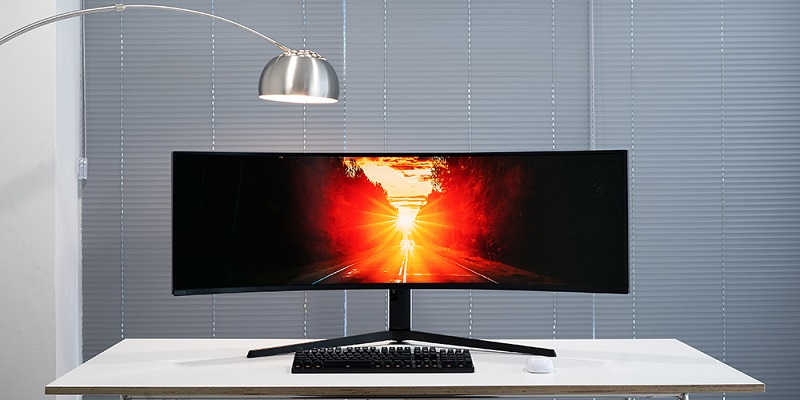At CES 2023, the tech world stood in awe as Samsung announced its latest gaming display, the Samsung Odyssey Neo G9. This gaming monitor immediately captured the attention of industry experts and enthusiasts alike, leaving them eager to explore its groundbreaking features and specifications. With a host of cutting-edge technologies and impressive performance capabilities, the Neo G9 promises to redefine the gaming experience. Let’s delve into the details and see what makes this monitor a true game-changer.
Display specifications
Measuring an impressive 57 inches, the Samsung Odyssey Neo G9 gaming display offers an expansive and immersive visual experience. Equipped with “quantum mini LED technology,” this display delivers stunningly vibrant and lifelike colors, elevating your gaming sessions to new heights. Furthermore, the Dual QHD resolution of 7,680×2,160 ensures crisp and sharp images that bring out even the smallest details. The Vesa DisplayHDR 1000 certification guarantees high dynamic range visuals, while the 1000R curvature rate enhances peripheral vision and adds depth to gameplay, making it ideal for ultrawide gaming.
Gaming features
For avid gamers, seamless performance is crucial. The Samsung Odyssey Neo G9 doesn’t disappoint in this regard. With its impressive 240Hz refresh rate, you can expect smooth and fluid motion without any annoying stutters or screen tearing. Combined with minimal response times, this display ensures that your gaming actions are accurately and instantaneously translated on the screen – a vital advantage in competitive gaming. Whether you’re exploring vast virtual worlds or engaged in intense multiplayer battles, the Neo G9’s gaming features aim to deliver an unparalleled experience.
Port combinations
In addition to its outstanding display capabilities, the Samsung Odyssey Neo G9 provides a comprehensive range of ports for seamless connectivity. Anticipated to include DisplayPort 2.1, this gaming display positions Samsung as the first company to adopt this cutting-edge standard. This allows for high-speed data transfer, enabling smooth 4K and even 8K gaming experiences. With an array of ports available, including HDMI options, the Neo G9 ensures compatibility with a wide range of gaming consoles, PCs, and other devices.
Price speculation
While Samsung has not yet disclosed the official price of the Odyssey Neo G9 gaming display, its premium features indicate that it will come with a significant price tag. Speculation suggests that it could exceed the $3000 mark, considering that its closest counterpart, the Odyssey Ark, retails at $2,999. This premium pricing reflects the Neo G9’s advanced technology and exceptional performance, making it an investment for serious gamers seeking the ultimate gaming experience.
Release Date
Gamers and tech enthusiasts are eagerly awaiting the official launch of the Samsung Odyssey Neo G9 gaming display. Mark your calendars for August 23rd, as this is when the Neo G9 is set to hit major retailers across the United States and globally. Be prepared to immerse yourself in gaming bliss and experience unparalleled visuals, thanks to Samsung’s groundbreaking technology and design.
The Samsung Odyssey Neo G9 gaming display truly raises the bar for gaming monitors with its extraordinary features and specifications. Offering an expansive 57-inch screen, quantum mini LED technology, Dual QHD resolution, and Vesa DisplayHDR 1000, it delivers captivating visuals that leave you breathless. Combined with its 240Hz refresh rate, minimal response times, and comprehensive port combinations, this display ensures that your gaming experience reaches new heights of immersion and responsiveness. While the anticipated premium price tag may require some investment, the Neo G9 promises to be a game-changer for serious gamers. Keep an eye out for further updates and reviews once the Samsung Odyssey Neo G9 hits the shelves on August 23rd. Brace yourself for a gaming adventure like no other.

